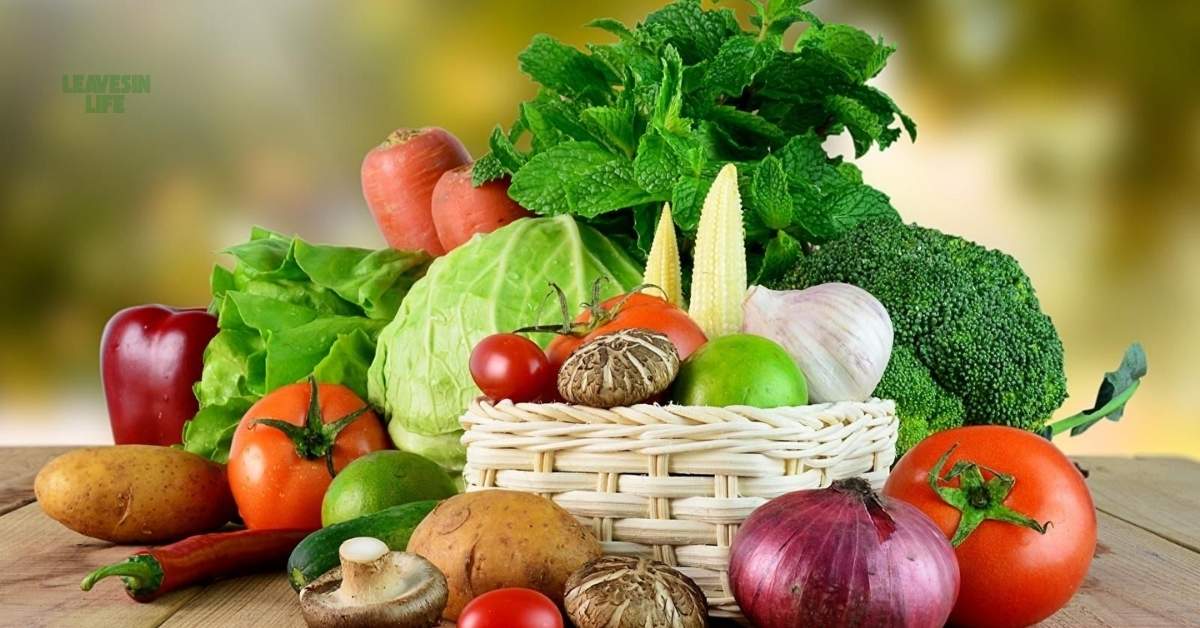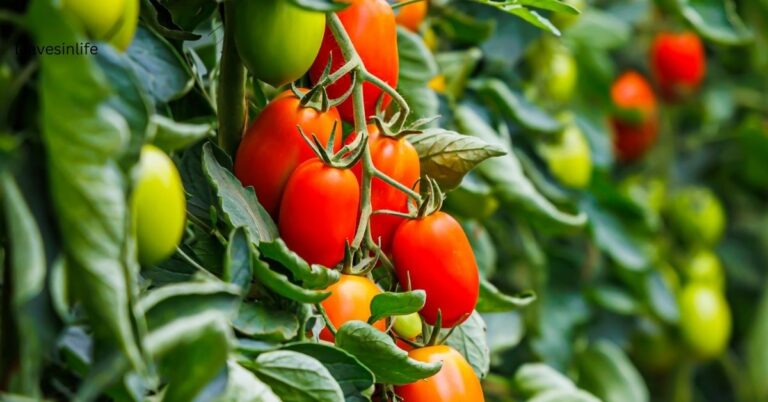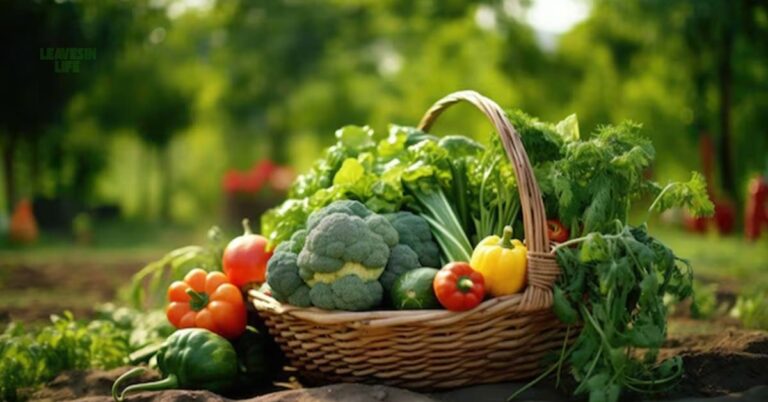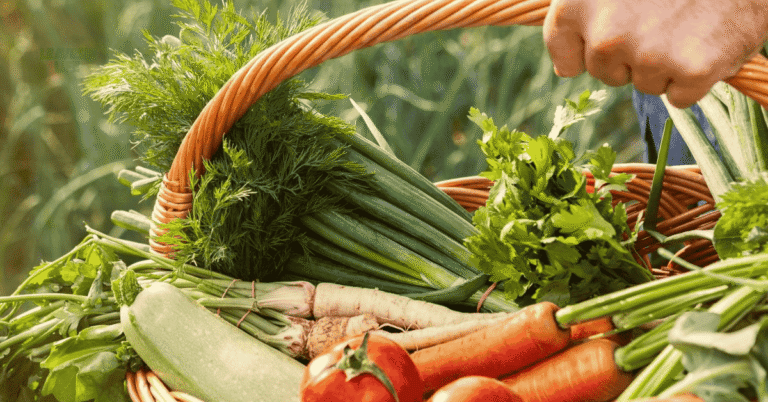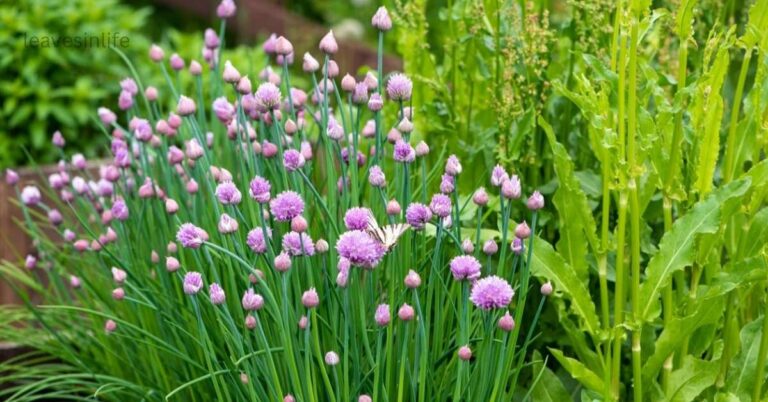October is the perfect month to start sowing cold-season and frost-tolerant vegetables. As the weather cools down, many plants grow faster and healthier. By planting the right vegetables this month, you can enjoy a fresh and productive garden throughout fall and winter.
In this guide, we will share 9 best vegetables to grow in October, including garlic, peas, turnip, parsley, and more. These vegetables are easy to grow, nutritious, and perfect for home gardens. Whether you are a beginner or an experienced gardener, this guide will help you plan and grow your October garden successfully.
How to Grow Garlic This October
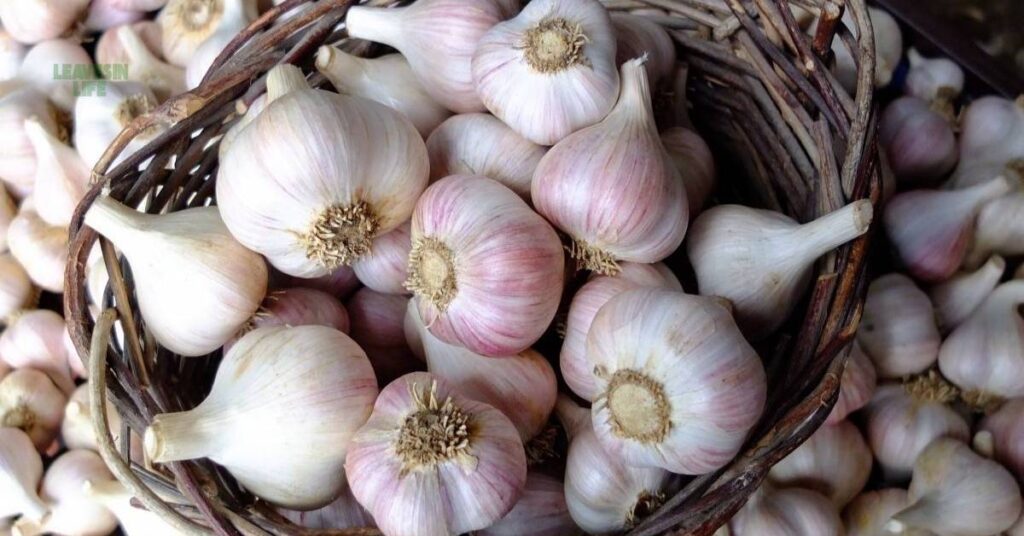
Garlic is one of the best vegetables to grow in October, as it loves cool weather. Planting now gives you strong bulbs ready for a fresh harvest next summer.
Planting Time
- Best time: October (cool weather is ideal).
- Garlic grows slowly through winter and is ready to harvest in summer.
Soil Requirements
- Well-drained, fertile soil is best.
- Ideal pH: 6.0-7.0
- Mix compost or organic matter into the soil before planting.
Planting Method
- Break a garlic bulb into individual cloves.
- Plant cloves 5-10 cm apart, 2-3 cm deep, with the pointed side up.
- Leave 20-25 cm between rows.
Watering Needs
- Keep the soil slightly moist, not soggy.
- Reduce watering in late spring as bulbs mature.
Fertilization
- Use a balanced fertilizer or compost at planting time.
- Garlic needs extra nitrogen during early growth.
Pests and Diseases
- Common pests: onion maggots and thrips.
- Garlic is one of the best vegetables to grow in October, but it still needs care to prevent diseases like white rot so rotate crops regularly.
- Avoid planting garlic in the same spot every year.
Harvesting
- Garlic is ready when the leaves turn yellow and start to dry.
- Usually harvested in June-July (next summer)
- Cure bulbs in a dry, airy place before storage.
Nutritional Benefits
- Rich in Vitamin C, B6, and manganese.
- Known for its antibacterial and immune-boosting properties.
- Helps maintain heart health and reduces inflammation.
Peas: Best Vegetables to Grow in October
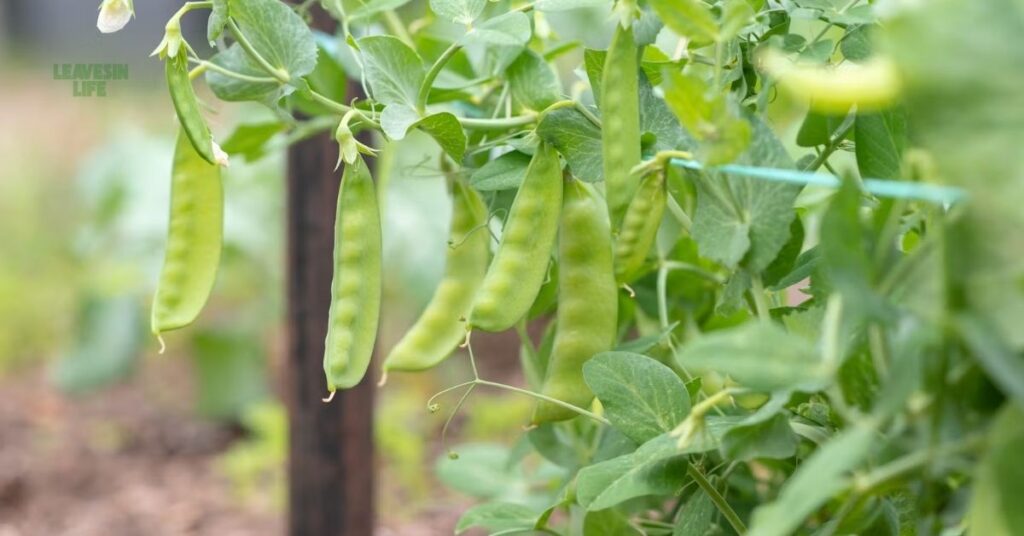
Peas are one of the best vegetables to grow in October because they thrive in cool weather. They are easy to plant, grow quickly, and taste delicious when picked fresh.
Growing peas in your garden can also improve soil fertility, as they naturally add nitrogen to the soil.
The Right Time to Grow Peas in October
- October is the best month to plant peas in many regions.
- Sow seeds directly into the ground for best results.
- Peas prefer cool temperatures and can tolerate light frost.
Best Soil and Sun Conditions for Peas
- Grow peas in well-drained, loamy soil.
- Ideal pH: 6.0 – 7.5
- Add compost before planting to enrich the soil.
Sowing Methods and Plant Spacing
- Sow seeds 2–3 cm deep in the soil.
- Space them 5-7 cm apart with 45-60 cm between rows.
- Provide support like a trellis for climbing peas.
Watering Tips for Healthy Pea Plants
- Keep the soil evenly moist, especially during germination.
- Avoid overwatering to prevent root rot.
Simple Fertilizer Needs of Peas
- Peas don’t need too much fertilizer.
- Avoid excess nitrogen, as it reduces pod production.
- Light compost is usually enough.
Keeping Peas Safe from Pests & Diseases
- Common pests: aphids, pea weevils, cutworms.
- Prevent fungal issues like powdery mildew with crop rotation.
- Organic sprays like neem oil work well.
How and When to Harvest Peas
- Peas are ready to harvest in 60-70 days.
- Pick pods when they’re bright green and tender.
- Regular harvesting helps plants produce more.
Why Peas Are a Nutritious Choice
- A rich source of protein, fiber, Vitamin A, C, and K.
- Great for digestion, bones, and immunity.
- A healthy addition to soups, curries, and salads.
Turnip Planting Tips – Best Vegetables to Grow in October
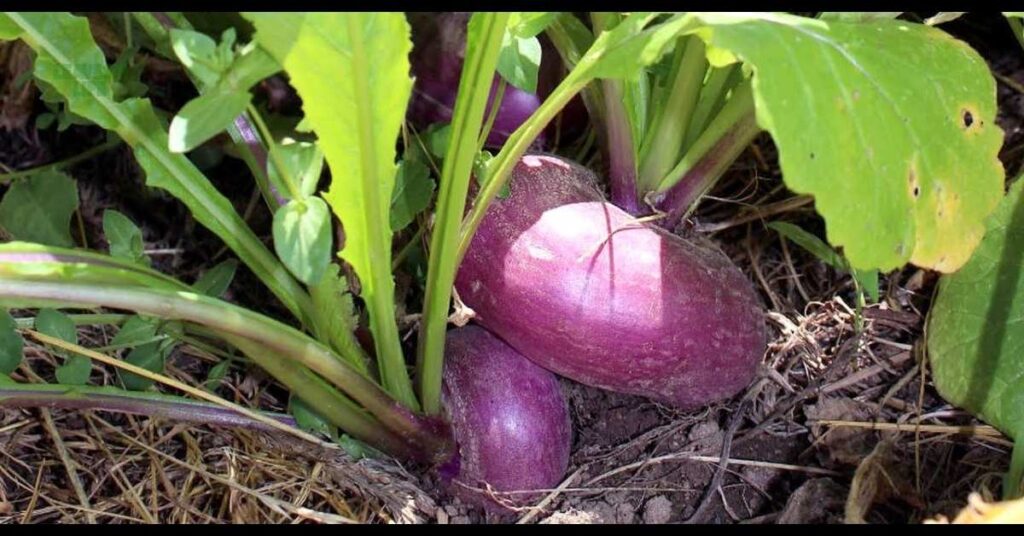
Turnips are root vegetables that thrive in cool weather, which makes them one of the best vegetables to grow in October. They grow quickly, require very little care, and are a great choice for both beginners and experienced gardeners. With the right soil and simple care, you can enjoy fresh, crisp turnips in just a few weeks.
Best Time to Plant Turnips
- October provides the cool climate that turnips love.
- Seeds can be sown directly into the soil.
- Turnips grow fast and can be harvested within 40-60 days.
Soil Requirements for Turnips
- Loose, well-drained soil works best.
- Ideal soil pH: 6.0 – 6.8
- Add compost or organic matter to improve soil health.
Planting Method
- Sow seeds about 1/2 inch deep.
- Space them 2-4 inches apart in rows.
- Thin seedlings once they sprout to avoid overcrowding.
Watering and Care
- Turnips need consistent moisture for healthy root development.
- Water lightly 2–3 times a week, depending on the weather.
- Avoid waterlogging, as it can damage roots.
Fertilization Needs
- Turnips don’t need heavy feeding.
- Use a balanced fertilizer before planting.
- Too much nitrogen leads to leafy tops but small roots.
Common Pests and Diseases
- Watch for pests like aphids, flea beetles, and root maggots.
- Practice crop rotation to avoid soil-borne diseases.
- Use neem oil or organic sprays for safe protection.
Harvesting Turnips
- Harvest when roots are 2–3 inches wide for best taste.
- Smaller turnips are sweeter and more tender.
- Leaves (turnip greens) are also edible and nutritious.
Nutritional Benefits
- Rich in Vitamin C, fiber, calcium, and potassium.
- Good for digestion, bone health, and immunity.
- Both roots and greens are low in calories and full of flavor.
Growing Parsnip in October
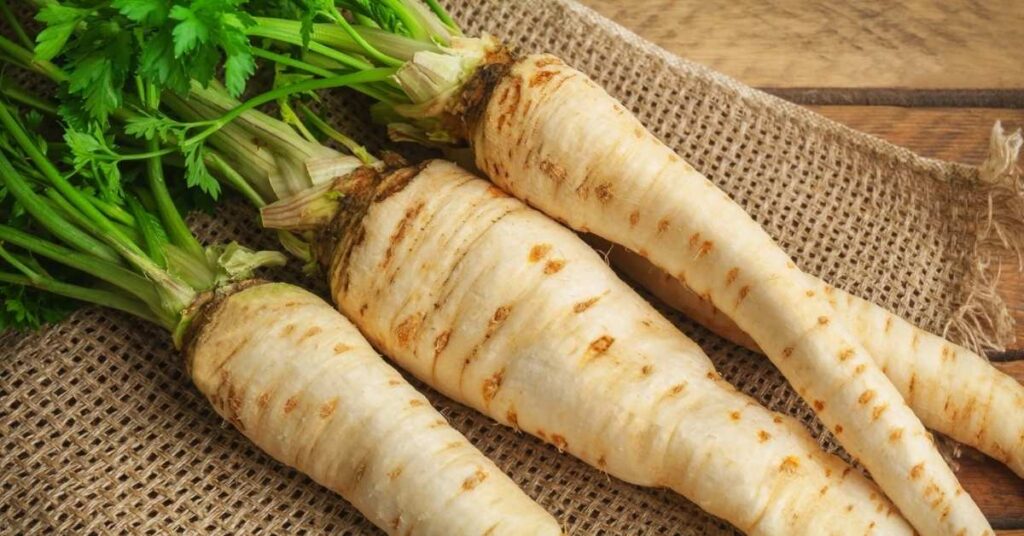
Parsnips are root vegetables that look a bit like carrots but have a sweeter, nutty flavor. They love cool weather, which makes October the perfect month to grow them. If you have never tried growing parsnips before, this is a good time to start because they are hardy, easy to care for, and taste amazing when harvested after a little frost. That’s why parsnips are counted among the best vegetables to grow in October.
Why October is the Right Time to Grow Parsnips
- October’s cool temperatures help parsnip seeds germinate slowly but steadily.
- They need a long growing season (up to 16 weeks), so plant them early in the month.
- Frost actually improves their flavor, making them sweeter.
Soil Tips for One of the Best Vegetables to Grow in October
- Parsnips prefer deep, loose soil so roots can grow straight.
- Remove stones or clumps from soil to avoid crooked roots.
- Mix compost into the soil for better growth.
Planting Parsnip Seeds the Right Way
- Sow seeds about 1/2 inch deep directly in the ground.
- Keep rows about 12-18 inches apart.
- Thin seedlings later so each plant has space to grow.
Watering and Care Tips for Healthy Roots
- Keep the soil moist, especially during germination.
- Parsnips don’t like waterlogging, so avoid heavy watering.
- Add mulch to lock in soil moisture.
Fertilizer Guide for Parsnip Growth
- They don’t need much feeding.
- A small amount of balanced fertilizer at planting time is enough.
- Avoid too much nitrogen, as it promotes leaves instead of roots.
Coriander: Best Vegetables to Grow in October
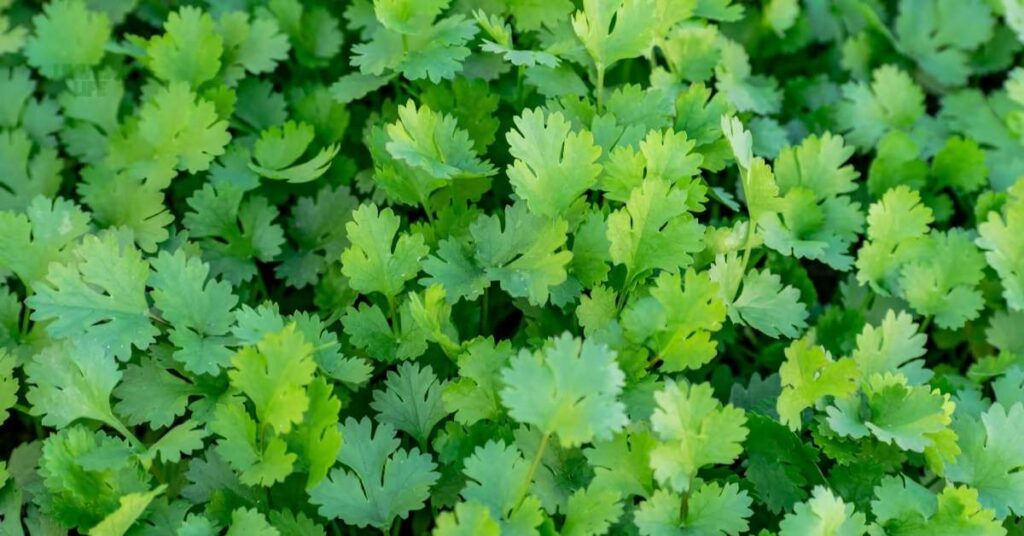
Coriander, also called cilantro, is a popular herb that adds fresh flavor to many dishes. It is one of the best vegetables to grow in October because it grows well in cool weather. The leaves and seeds are both useful, making it a double-purpose plant for your kitchen.
Best Time to Plant
- October’s mild weather is perfect for coriander.
- It grows fast and can be harvested within 30–40 days.
- Cool temperatures keep the leaves fresh and green.
Soil Preparation
- Coriander likes well-drained, fertile soil.
- Ideal soil pH 6.2 – 6.8.
- Add compost or organic matter to improve soil health.
Planting Method
- Sow seeds directly into the soil.
- Cover them lightly with soil (about 1/2 inch deep).
- Space plants 6 inches apart for healthy growth.
Watering Needs
- Keep soil slightly moist but not soggy.
- Water regularly, especially during dry days.
- Mulch can help retain moisture in the soil.
Fertilization
- Coriander does not need heavy feeding.
- Use a light, balanced fertilizer once or twice.
- Too much fertilizer makes the plant grow tall and lose flavor.
Harvesting
- Harvest leaves when they are young and tender.
- Cut the outer leaves first; new leaves will keep growing.
- Seeds can be collected once the plant matures and turns brown.
Health Benefits
- Rich in Vitamin C, Vitamin K, and antioxidants.
- Supports digestion and boosts immunity.
- Adds flavor and freshness to many meals.
Parsley Guide: Vegetables to Grow in October
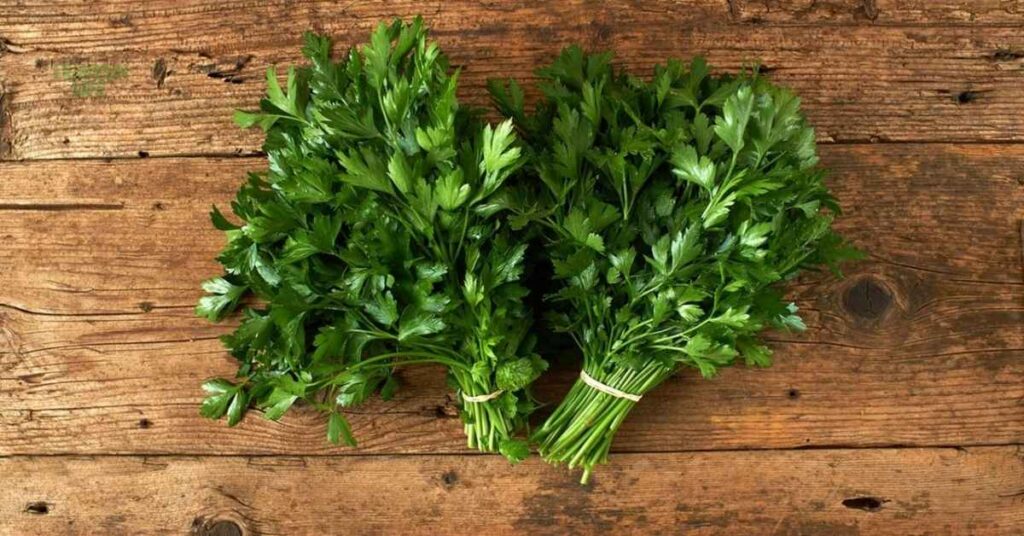
Parsley is a popular herb used for garnishing, salads, soups, and many recipes. October is a great time to grow parsley because the cooler weather helps the plant develop fresh, green leaves. It is easy to grow and can be harvested for many months, which makes it one of the best vegetables to grow in October.
Why Grow Parsley in October
- Cool temperatures help parsley germinate better.
- Plants stay healthier and produce tastier leaves.
- Can be grown in the garden or in small pots indoors.
Preparing the Growing Area
- Use soft, well-drained soil rich in organic matter.
- Remove weeds and stones before planting.
- Add compost to make the soil fertile.
Sowing Seeds
- Soak parsley seeds in water overnight for faster germination.
- Plant seeds about 1/4 inch deep.
- Space plants 6-8 inches apart for good air circulation, making parsley one of the best vegetables to grow in October.
Caring for Parsley Plants
- Water regularly to keep the soil moist.
- Parsley grows best in partial sunlight.
- Mulching helps protect the roots and keep moisture in.
Harvesting Fresh Leaves
- Harvest leaves when the plant is about 6-8 inches tall.
- Pick outer leaves first to allow new growth.
- Regular cutting encourages more fresh leaves.
Nutritional Value
- Parsley is rich in Vitamin A, C, K, and iron.
- It supports healthy skin, bones, and immunity.
- A small herb with big health benefits.
Growing Chives – One of the Best Vegetables to Grow in October
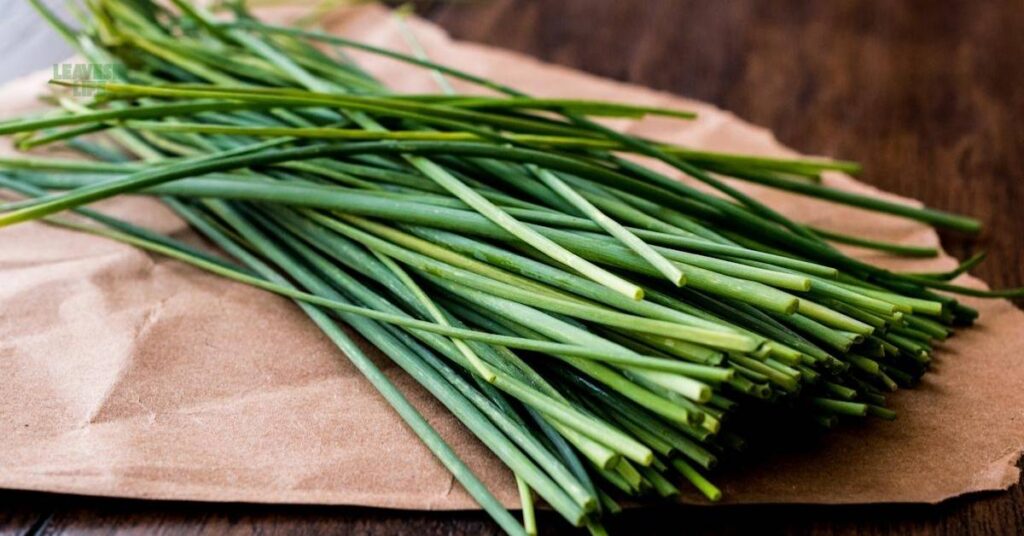
Chives are a flavorful herb from the onion family that grow very well in cool weather. October is a perfect month to plant them because they are considered one of the best vegetables to grow in October. They can grow both in the garden and in pots, and because they are so easy to care for, they are a great choice even for beginners.
Why Plant Chives in October
- Cool weather supports strong and healthy growth.
- Easy to grow in small spaces or containers.
- Regular harvesting gives you fresh leaves for months.
Soil Preparation
- Chives prefer soft, well-drained soil.
- Mix compost or organic matter before planting.
- Ideal soil pH is 6.0-7.0.
Planting Tips
- Sow seeds about1/4 inch deep.
- Keep 6-8 inches space between plants.
- Transplants can also be used for quicker harvest.
Caring for Chives
- Water regularly to keep the soil moist.
- Avoid waterlogging by ensuring good drainage.
- Remove weeds from around the plants.
Harvesting Fresh Chives
- Cut leaves when they reach about 6 inches tall.
- Always cut from the base of the plant.
- Frequent cutting encourages more new growth.
Health Benefits
- Rich in Vitamin A, C, and K.
- Support immunity and digestion.
- Add flavor to meals without extra calories.
Sorrel – One of the Best Vegetables to Grow in October
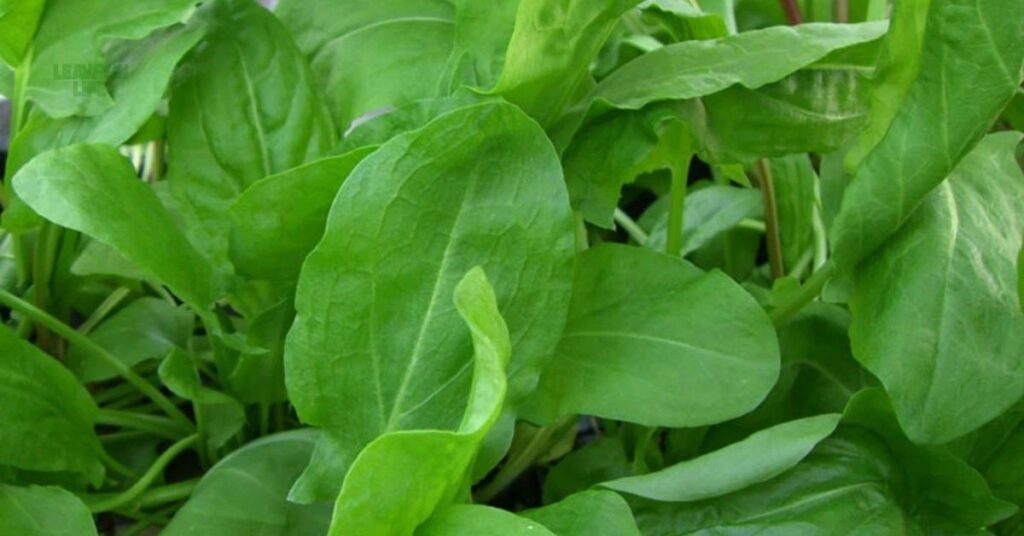
Sorrel is a leafy green with a fresh, lemon-like taste that grows very quickly in cool weather. That’s why it is known as one of the best vegetables to grow in October. It is easy to plant, needs little care, and can be harvested again and again throughout the season.
Benefits of Growing Sorrel in October
- Grows quickly in cool weather.
- Easy to grow in small spaces or pots.
- Can be harvested within a few weeks.
Best Soil for Sorrel
- Needs moist, well-drained soil.
- Adding compost improves growth.
- Ideal pH 5.5-6.8.
How to Plant Sorrel
- Sow seeds 1/2 inch deep in rows.
- Keep 8 -10 inches between plants.
- Thin seedlings if too crowded.
Caring for Your Plants
- Water regularly to keep soil moist.
- Use mulch to hold water and control weeds.
- Requires very little attention.
Harvesting Fresh Leaves
- Pick young leaves for the best taste.
- Cut from the outside so new leaves regrow.
- Frequent picking encourages more growth.
Health Benefits of Sorrel
- Rich in Vitamin C for strong immunity.
- Contains iron, good for blood health.
- Helps digestion with natural acids.
- Adds fresh flavor to salads, soups, and sauces.
Fava Beans – Best Vegetables to Grow in October
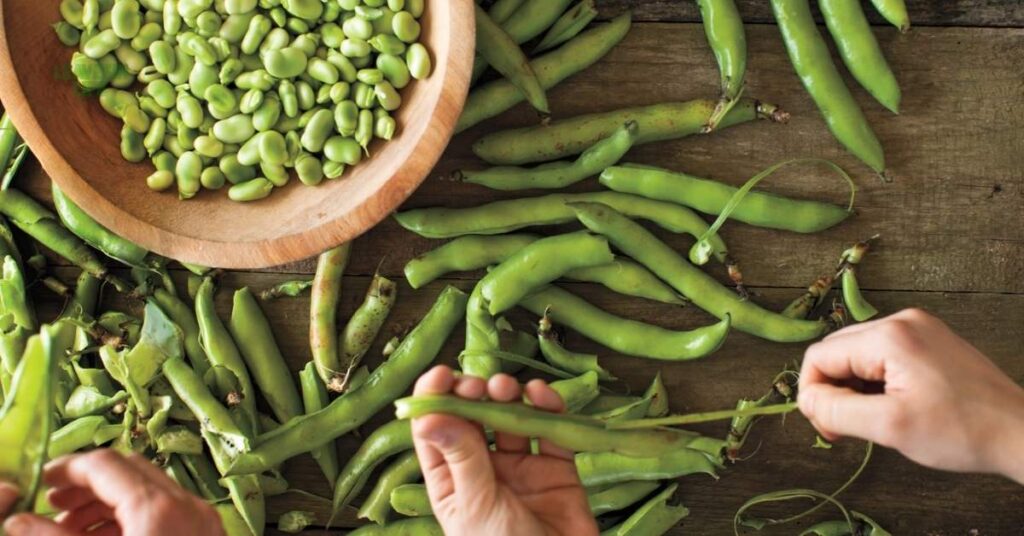
Fava beans are a cool-season crop that grows very well in October. They are easy to plant, rich in nutrients, and add nitrogen to the soil, which also helps other plants. That’s why they are among the best vegetables to grow in October.
Benefits of Growing Fava Beans in October
- Thrive in cool weather.
- Improve soil fertility by adding nitrogen.
- Provide protein-rich beans for meals.
Best Soil for Fava Beans
- Well-drained, fertile soil is ideal.
- Add compost before planting.
- Soil pH 6.0-7.0.
How to Plant Fava Beans
- Sow seeds 1-2 inches deep.
- Keep 6 inches apart between seeds.
- Leave 18-24 inches between rows.
Caring for the Plants
- Water regularly but avoid soggy soil.
- Use mulch to keep soil moist.
- Support taller plants with stakes if needed.
Harvesting Fava Beans
- Pods are ready when they look full and firm.
- Pick while beans are still tender.
- Regular harvesting encourages more pods, making fava beans one of the best vegetables to grow in October for a rich garden yield.
Health Benefits of Fava Beans
- High in protein and fiber.
- Rich in vitamins and minerals like iron and magnesium.
- Good for heart and digestion.
Conclusion
October is a wonderful month for planting because the cool weather helps many vegetables grow strong and healthy. From garlic and peas to fava beans, sorrel, and parsley, each crop brings unique flavors and health benefits to your garden. Choosing the best vegetables to grow in October not only gives you fresh food but also keeps your garden active all season. So, pick your favorites, prepare the soil, and enjoy a fresh harvest in the coming months.
For more tips, check out guide on Vegetables to plant in August
If you missed last month’s planting ideas, don’t forget to check our Vegetables to Grow in September.

